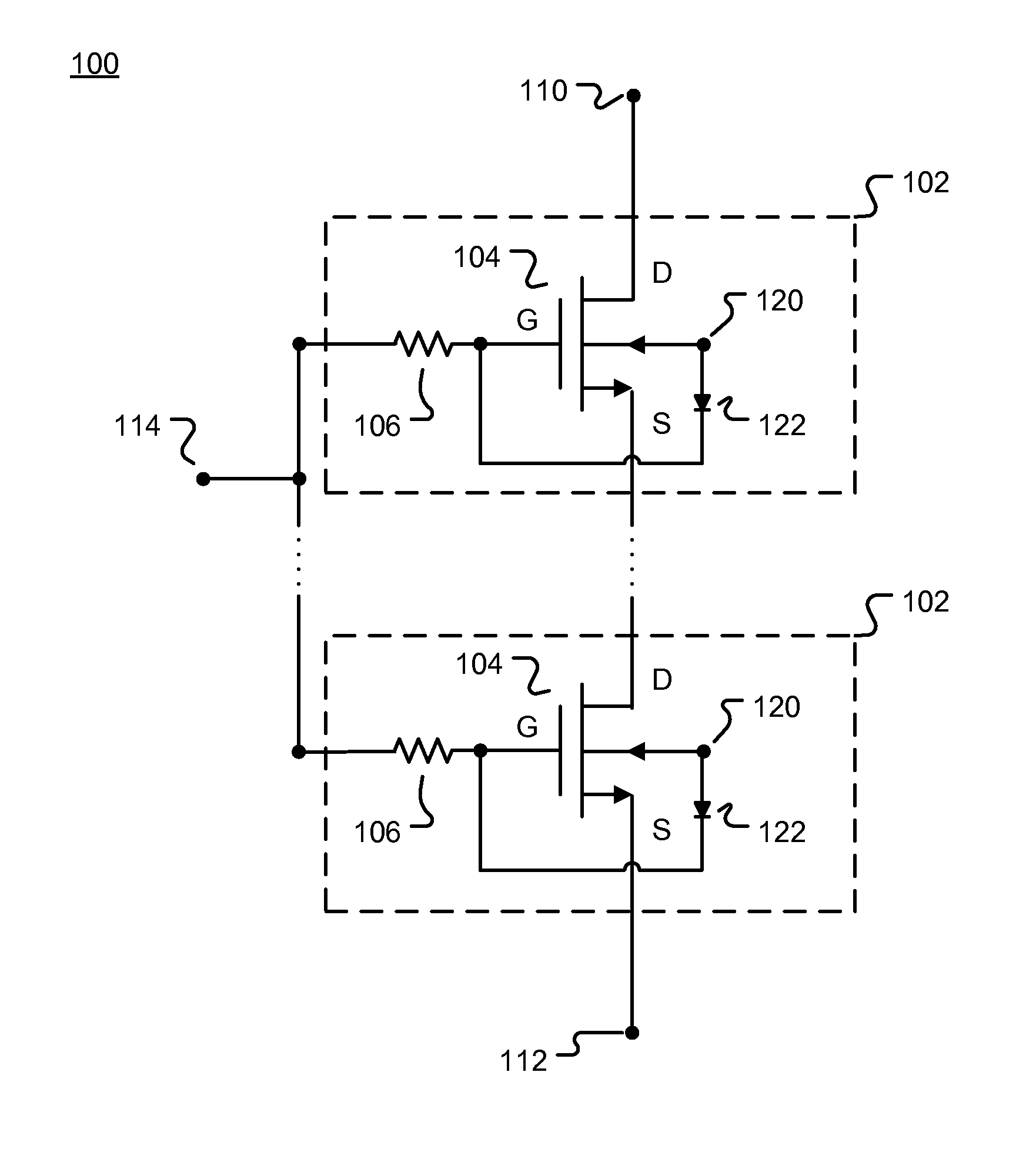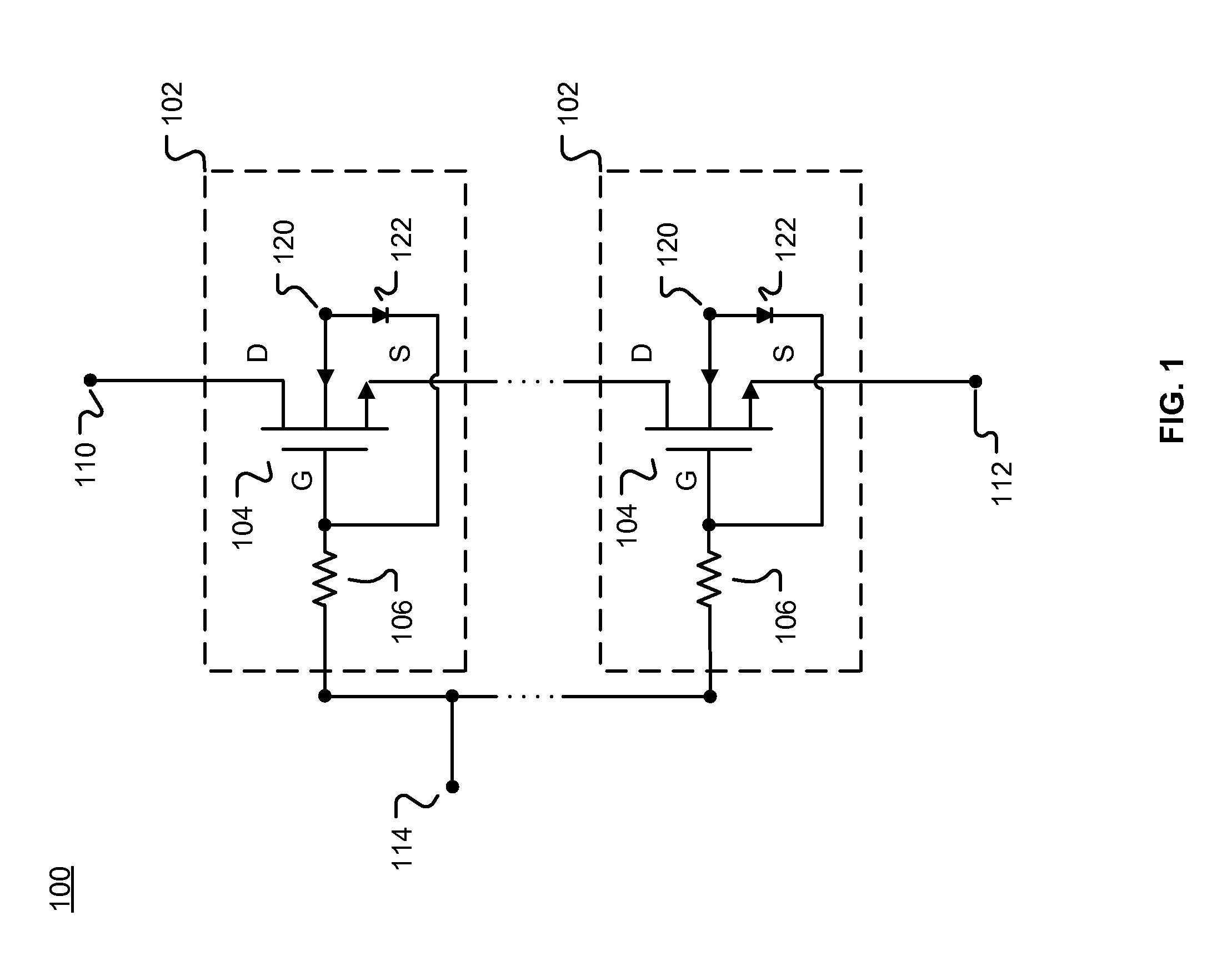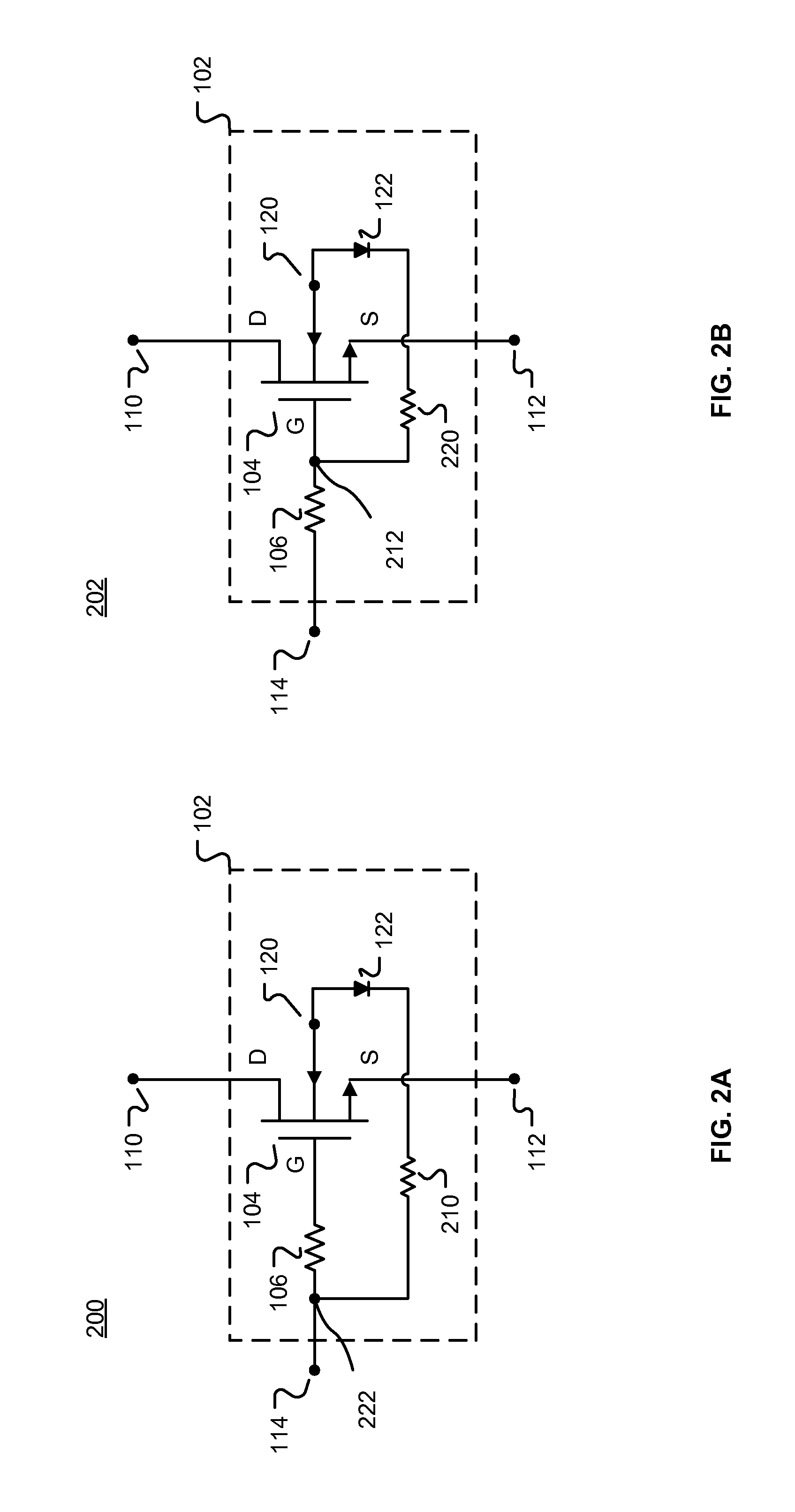Circuit and Method for Improving ESD Tolerance and Switching Speed
a technology of electrostatic discharge and switching speed, applied in the field of electrostatic discharge tolerance and switching speed improvement, can solve the problems of ic affecting other circuit parameters, damage to a fet, and poor linearity of conventional rf signal switch ic capable of switching at high speed, so as to improve the fet structure having accumulated charge sink (acs) circuit, improve esd tolerance, and fast switching time
- Summary
- Abstract
- Description
- Claims
- Application Information
AI Technical Summary
Benefits of technology
Problems solved by technology
Method used
Image
Examples
Embodiment Construction
[0018]FIG. 1 is a simplified block diagram of a circuit architecture 100 with stacked semiconductor devices and accumulated charge sink modules according to various embodiments. Shown are a plurality of switching modules 102 in a stacked configuration. In the illustrated embodiment, each switching module 102 includes a FET 104 that includes conventional drain (D), source (S), and gate (G) connections. Connected to the gate of each FET 104 is a gate resistor 106. In general, the stack height N of the circuit architecture 100 (i.e., the number of stacked switching modules 102) is determined by the amount of voltage that the circuit architecture 100 is required to handle. In some embodiments, only one switching module 102 may be needed. As shown in FIG. 1, the circuit architecture 100 also includes a first port 110 coupled to the drain D of a switching module 102, second port 112 coupled to the source of a switching module 102, and a control signal port 114 coupled to each gate resisto...
PUM
 Login to View More
Login to View More Abstract
Description
Claims
Application Information
 Login to View More
Login to View More - R&D
- Intellectual Property
- Life Sciences
- Materials
- Tech Scout
- Unparalleled Data Quality
- Higher Quality Content
- 60% Fewer Hallucinations
Browse by: Latest US Patents, China's latest patents, Technical Efficacy Thesaurus, Application Domain, Technology Topic, Popular Technical Reports.
© 2025 PatSnap. All rights reserved.Legal|Privacy policy|Modern Slavery Act Transparency Statement|Sitemap|About US| Contact US: help@patsnap.com



